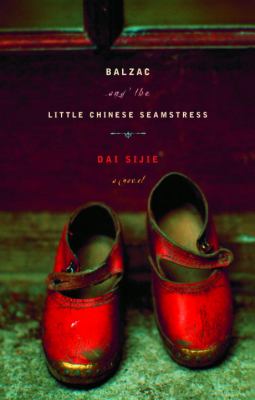
Balzac and the Little Chinese Seamstress, written by Dai Sijie, is a great book about life during Mao Zedong’s cultural revolution of China. The book is about two teenagers who are uneducated past elementary school, being sent to a rural mountain village to be “re-educated” with values that Mao appreciates, rather than education in school. The main message of the story is how books have the power to transform people.
It was really interesting to see the effect the books had on people who were otherwise uneducated. For example, the narrator experiences a lot of learning and growth through these books. The narrator's clandestine dive into the world of Western literature opens him up to a new world he never could have imagined. With the cultural dullness brought about by the restrictive ideals at the time, these outlawed works of Western literature liberate him and expand his perspective on life. As he describes when he first dove into this captivating world, “picture, if you will, a boy of nineteen, [ . . . ] having heard nothing but revolutionary blather about patriotism, Communism, ideology and propaganda all his life, falling headlong into a story of awakening desire, passion, impulsive action, love, or all the subjects that had, until then, been hidden from me”. The emotions he reads about translate to his own life for the first time, with his feelings towards the Little Seamstress. He feels desire, passion, and love as he spends more time with the Seamstress, becoming increasingly attracted to her, even daydreaming about “kissing her red nails”, as he takes care of her and protects her. His awakening is displayed through his impulsive desire to help the little seamstress get an abortion. He risks his own freedom and receives much criticism from many women at the clinic, for his loyalty to her. The women even confront him, putting him in an uncomfortable situation, which shows his true ambition to help the seamstress.
The ideals of individualism which he displays, unique to the country of China at the time, are also acquired from his newfound Western Literature. His encounter with Romain Rolland Jean-Christophe opens his eyes to the “splendour of taking free and independent action as an individual,” as he states, “my poor educated and uneducated brains had been incapable of grasping the notion of one man standing up against the whole world” . Against all the values of Mao’s China, he makes a brave sacrifice on his tenacious quest to get the little seamstress an abortion. In the face of laws outlawing people under the age of twenty-five having a child, he stands up against society in his attempt to save the little seamstress. Had he gone with the way of the times, he should have turned her in for breaking the law, but with his newfound value of passion and desire, revealed to him from Western Literature, he secretly and nobly obtains help for the seamstress. His individuality and desire for more in life, as well as leading him to help out the little seamstress, ultimately lead him to a life of writing, leaving the mountain with his first opportunity. It is fascinating how these books transform him, as well as other characters in the book, as you will see if you read it. The Little Seamstress, the main character, undergoes much change, leading to a very dramatic and surprising ending. I recommend this book to everyone. Not only is it informative, but it has a great message.
Check out Balzac and the Little Chinese Seamstress at the Newport Beach Public Library.